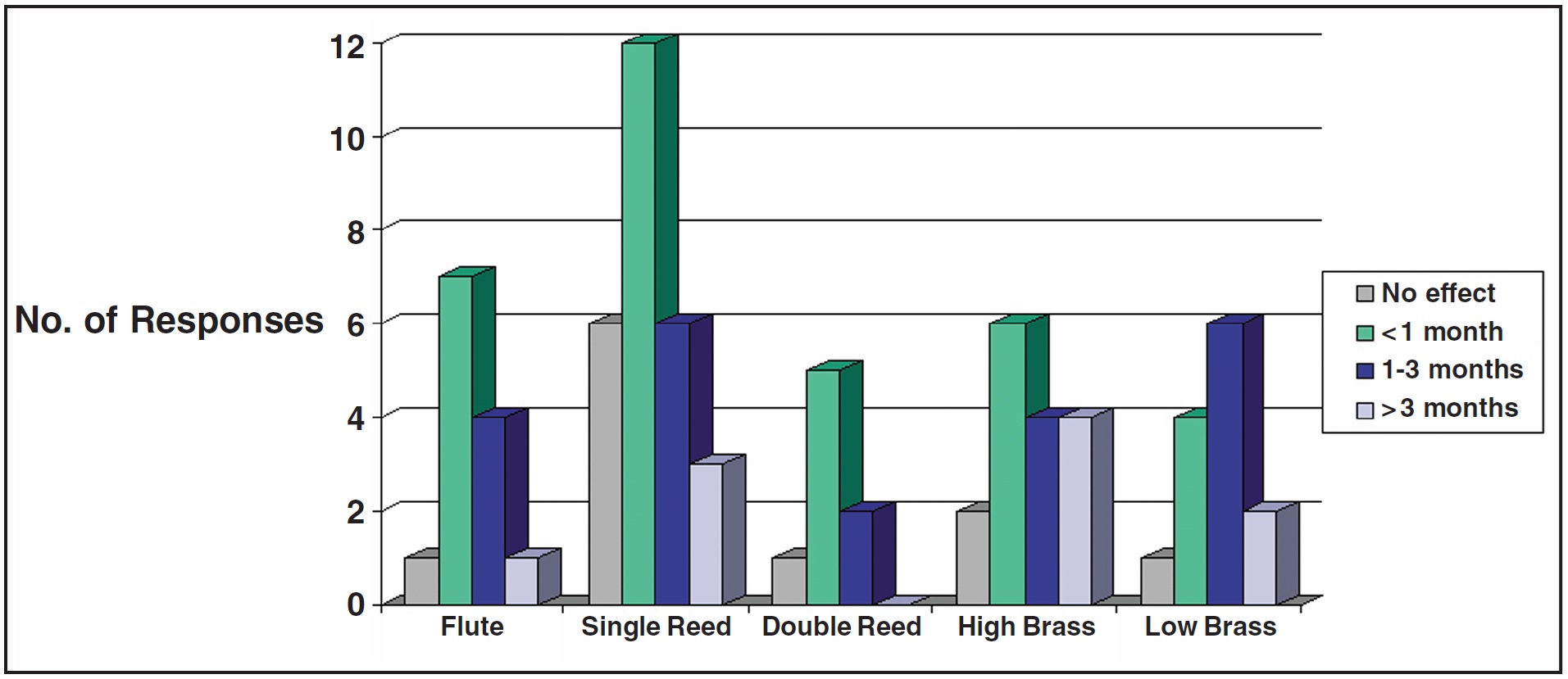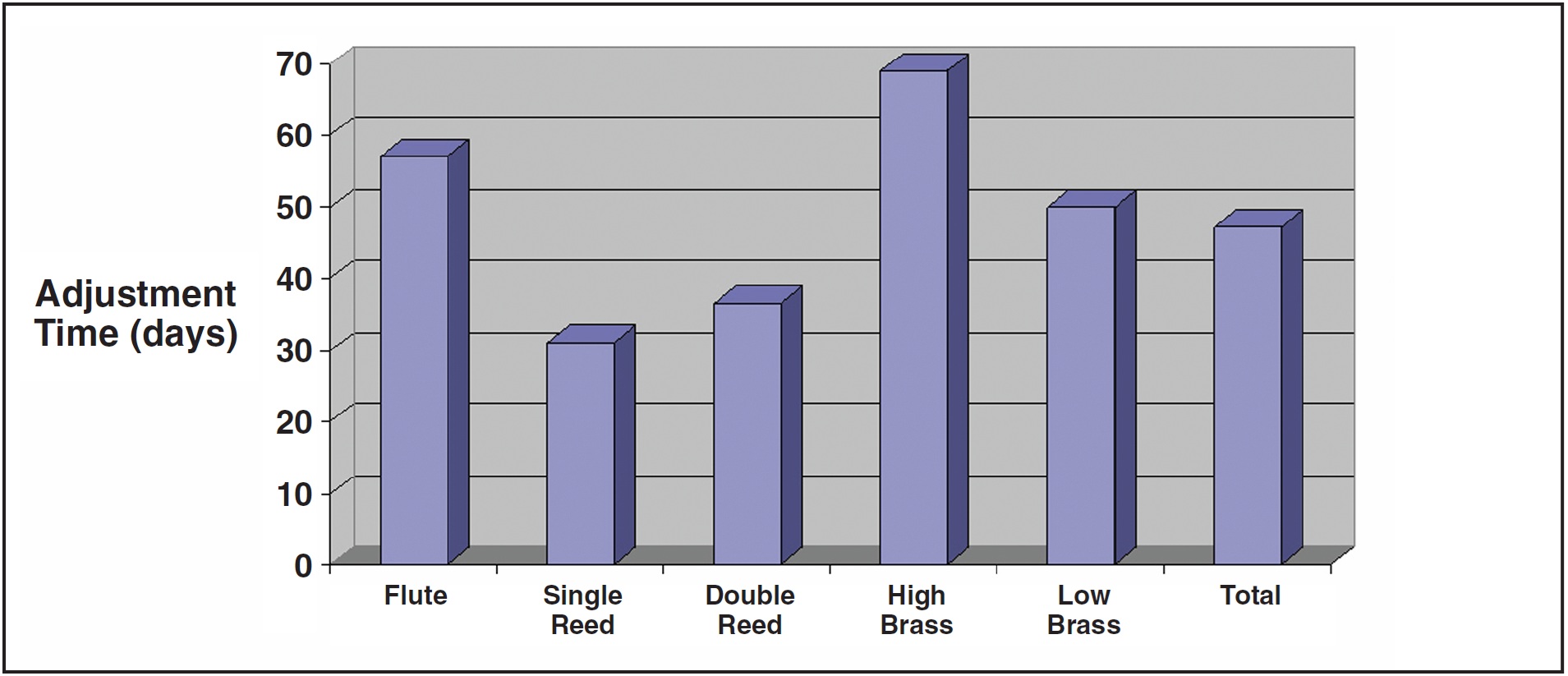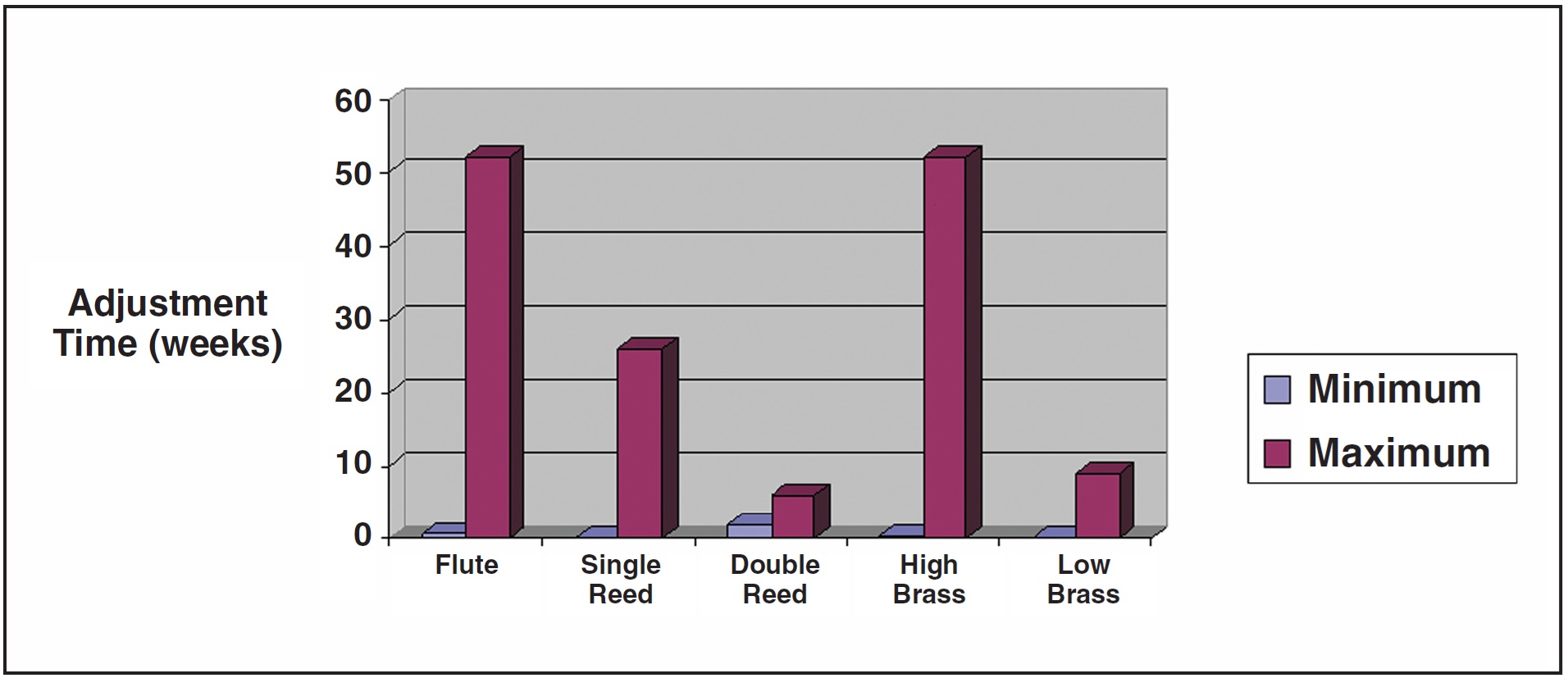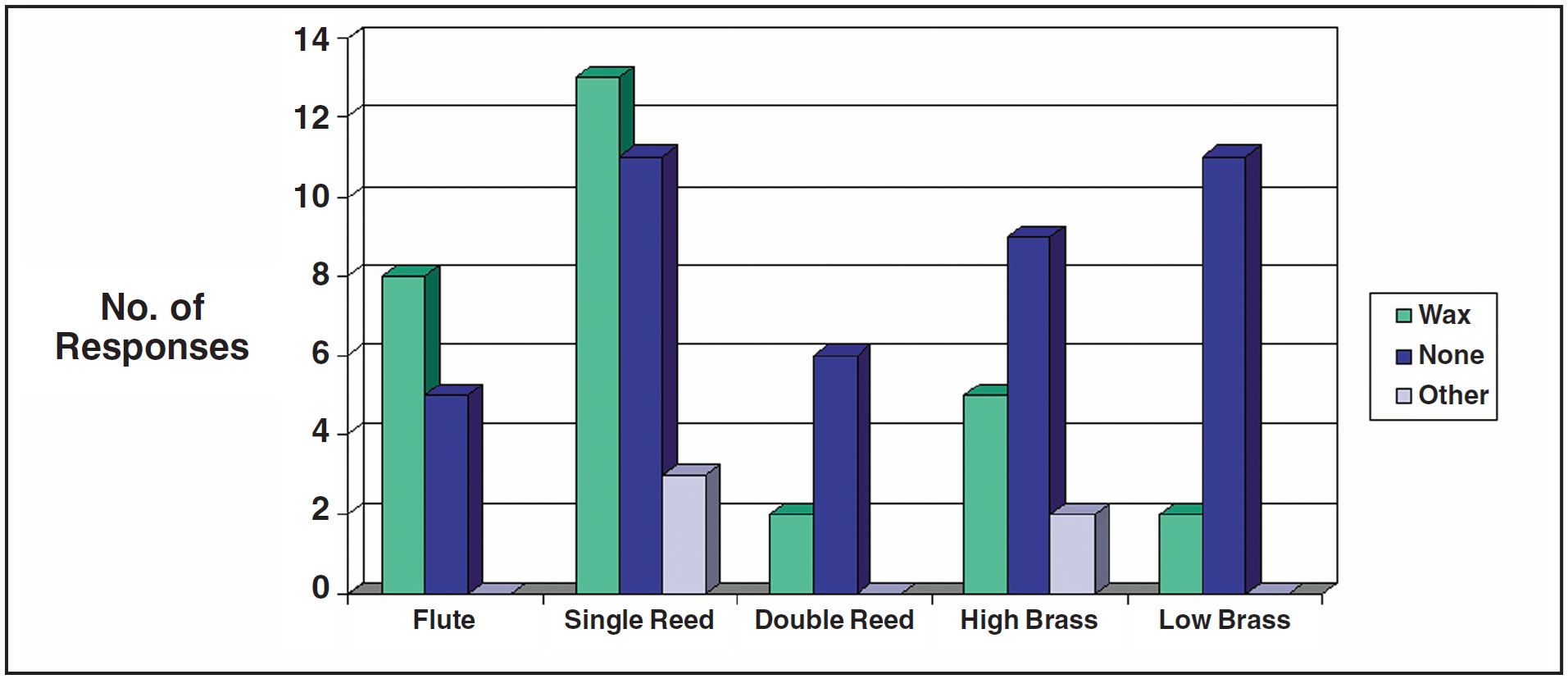The Effects of Orthodontic Appliances on Wind-Instrument Players
Fixed orthodontic appliances can have a negative impact on the musical ability of wind-instrument players by causing discomfort and by interfering with the correct embouchure.1-8 This report describes a survey of band members in junior high and high schools on the effects of their orthodontic appliances.
Methodology
The questionnaire contained the following six questions:
- What instrument do you play?
- How long did you play it before you had braces?
- How did braces affect the way you played your instrument?
- How long did it take you to get used to playing your instrument with braces?
- Did any specific aids (examples: wax, brace guard, etc.) help you get used to playing your instrument with braces?
- Do you have any suggestions to help people who play wind instruments adjust easier to braces?
Band students at a high school and junior high school in Katy, Texas, and at high schools in the Oklahoma City area were surveyed. A total of 78 responses were received. The instruments were grouped into five categories based on the type of mouthpiece and its relationship to the oral structures (Table 1).
Similar articles from the archive:

Results
The length of time respondents had played their instruments before getting braces ranged from zero to eight years, with an average of about two years. Overall, only 14% of the respondents said that braces had no adverse effect on their playing ability.
For purposes of this study, "getting used to braces" was defined as achieving the playing proficiency that the student had before orthodontic treatment. Woodwind players, and particularly those who played reed instruments, seemed to adjust quickly, usually in less than a month (Fig. 1).

Fig. 1 Time required to adjust to orthodontic appliances.
Brass players took longer to adjust to playing their instruments with braces--an average of one to three months (Fig. 2).

Fig. 2 Average adjustment time by type of instrument.
This result is not surprising, because brass mouthpieces are pressed against both the upper and lower lips. There was a wide range of adjustment times, however, especially for flute and high brass players (Fig. 3).

Fig. 3 Range of adjustment times by type of instrument.
There was no correlation between the adjustment time and the length of time the student had played the instrument prior to orthodontic treatment.
Wax was the most popular aid used to relieve discomfort while playing an instrument (Fig. 4). Most of the flute and single-reed players said they applied wax to each bracket to avoid impingement on the cheeks or lips. On the other hand, many of the double-reed and brass players did not use any aids for their braces.

Fig. 4 Aids used by wind-instrument players with orthodontic appliances.
Five of the 78 respondents reported using other methods to minimize the effects of their appliances, with varying degrees of success. Chamois strips made of deerskin were cut into strips and soaked in mouthwash before being placed over the brackets. Paraffin wax was melted on a stove and molded to the braces before hardening. One student folded tape over the lower brackets to cover the labial surfaces of the teeth. Another tried using masking tape to cover the appliances, but reported no improvement. Only one respondent had used a commercially available aid such as Morgan Bumpers* (a C-shaped, medical-grade polyvinyl chloride shield), Braceguard** (a putty-catalyst combination), or Brace Gard*** (a food-grade transparent silicone wax). This suggests either that these devices do not work well or that few orthodontists recommend them to their patients.
Nearly all the band students had the same advice for other wind-instrument players who were trying to adjust to orthodontic appliances: "They will get used to it". The second most popular recommendation was to practice more to become accustomed to the braces. Many woodwind players recommended using wax, and most brass players believed it was advisable not to press the mouthpiece too hard against the lips.
Conclusion
All the wind-instrument players who started orthodontic treatment had to reestablish their embouchures and essentially learn to play their instruments again. Brass players generally seemed to suffer more adverse effects from wearing braces than woodwind players did, but many students reported difficulty in playing high and low notes.
Wax was the most popular comfort aid, especially among woodwind players. Since the wax works by smoothing the rough edges of the brackets, it seems that wind players would cope better with brackets that have reduced profiles and smooth, rounded edges that will not cut or irritate the lips.
ACKNOWLEDGMENTS: My two uncles--Dr. Jay Ghosh, an orthodontist in Allen, Texas, and Dr. Steven Raney, an orthodontist in Oklahoma City--helped me develop the questionnaire, obtain responses, and review the results. I am thankful for their insights and assistance. I also appreciate the interest shown in this work by Dr. Thomas Harrison of Katy, Texas, and Drs. W. Bonham Magness, Virginia Noriega, William Reeves, and Hal Stevenson of the Houston area. I would like to express my appreciation to my parents for encouraging me to undertake this project and for reviewing the manuscript. Finally, I am grateful to the band directors who distributed the questionnaire and to all the students who took the time to complete the survey.
FOOTNOTES
- *Morgan Bumper Company, 3011 Maine, Quincy, IL 62301; www.morganbumper.com.
- **Trademark of AKMS, Inc., P.O. Box 50329, Columbia, SC 29250; www.braceguard.com.
- ***Trademark of Infa-Lab, Inc., 11 Wall St., Rockaway, NJ 07866; www.infalab.com.
REFERENCES
- 1. Yeo, D.K.L.; Pham, T.P.; Baker, J.; and Porter, S.A.T.: Specific orofacial problems experienced by musicians, Austral. Dent. J. 47:2-11, 2002.
- 2. Gualtieri, P.A.: May Johnny or Janie play the clarinet? The Eastman Study: A report on the orthodontic evaluations of college-level and professional musicians who play brass and woodwind instruments, Am. J. Orthod. 76:260-276, 1979.
- 3. Seidner, S.: The pressure of brass instruments on lips, teeth, and jaws, J. Wisc. St. Dent. Soc. 43:53-55, 1967.
- 4. Herman, E.: Orthodontic aspects of musical instrument selection, Am. J. Orthod. 65:519-530, 1974.
- 5. Rindisbacher, T.; Hirschi, U.; Ingervall, B.; and Geering, A.: Little influence on tooth position from playing a wind instrument, Angle Orthod. 60:223-228, 1990.
- 6. Fuhrimann, S.; Schüpbach, A.; Thüer, U.; and Ingervall, B.: Natural lip function in wind instrument players, Eur. J. Orthod. 9:216-223, 1987.
- 7. Pang, A.: Relation of musical wind instruments to malocclusion, J. Am. Dent. Assoc. 92:565-570, 1976.
- 8. [url_new=http://www.jco-online.com/home.asp?page=article&Year=1975&Month=2&ArticleNum=73&SessionID=target="_blank"]Gottlieb, E.L.: The Editor's Corner, J. Clin. Orthod. 9:73-74, 1975.[/url_new]




